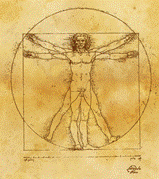Instructional Materials in Physics and Astronomy
Document Type
Article
Date of this Version
1975
Abstract
We've all grown up with sensations of hot and cold. You receive such specific sensations from touching objects, but also a generalized sensation from your environment. Thus, you may say: "This is hot; that is cold." But also, you say: "I am hot (cold, clammy, chilly, etc.)." These sensations are judgements about thermal conditions from the psychological point of view.
From the physical point of view, heat is transported energy; the body is an engine which transforms chemical energy to mechanical energy, and in doing so produces a residual amount of thermal energy from which the body must continually divest itself in order to maintain within itself a constant thermal environment (temperature). This divesture of thermal energy is accomplished by regulated heat flow (i.e., energy transported to the surroundings by virtue of a body/surroundings temperature difference). The vocabulary related to this viewpoint consists of concepts such as temperature, heat transfer, etc.
Yet another point of view describes the physiological processes by which the body transforms energy and divests itself of the excess. It has its own vocabulary (basal metabolism, sweating, shivering, etc.) as well.
These observations point out that you already have had numerous experiences with heat transport processes used as regulatory mechanisms by your body. The purpose of this module is to discuss the physical character of these heat transport processes. A companion module relates these concepts to the maintainance of a constant body temperature.
Specifically, this module examines thermometry and four fundamental physical processes by which heat exchange occurs between body and surroundings. This discussion, in the context of the human body system, derives physical and physiological correlates to the psychological perceptions of hot and cold. It is hoped that in addition to linking the three vocabularies, this exploration will evolve a basis for understanding your body's methods of temperature regulation.


Comments
A Physical Science Module for Bioscience Students
Project Address: PSMBS, 213 Ferguson Hall, University of Nebraska,
Lincoln, NE 68588.